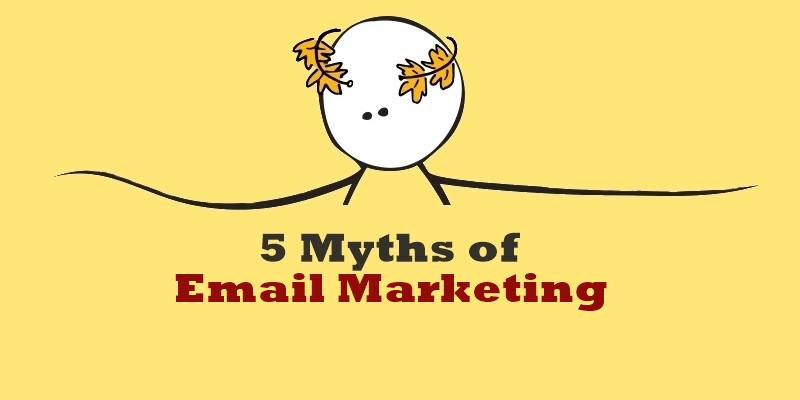It might seem like one of the more established forms of digital marketing communications, but email marketing is strikingly dynamic. It has seen amazing progress from the spray-and-pray, email-blast practice of five years back to our advanced, highly targeted marketing-automation campaigns. With this rate of progress, it can be hard for marketers to stay updated with all the patterns and, more essentially, to separate mere transitory trends from continuing, hard-won wisdom.
Email marketing has been a part of content or digital marketing from the start. So, it is not surprising that such a large number of common email marketing myths exist. What is surprising is how many people really believe them. While some of them are really clear to the majority of small business owners, some of them are much more obscure.
COMMON EMAIL MARKETING MYTHS
Myth #1: Shorter Subject Lines Get Better Results:
Recent studies have shown that the length of the subject line has a very minor effect on open rates. In some cases, a short, crispy subject line works, while in others, a great title takes more words. The key is making the most of each word and clearly distinguishing to the recipient the “What’s In It For Me” (WIIFM). Clarity and relevance trump character counts. As a standard, I push for shorter titles with the purpose of making the most of each word. But short does not always equal success. We’ve previously explained 10 tested ways to improve your email marketing subject lines. You may refer to that for in-depth information on the subject.
Myth #2: Email Everyone at the Same Frequency:
Your email marketing frequency relies on your clients. If you find that some of your existing or prospective customers interact with your email frequently, you must connect with them often. Being dependent upon your email marketing technique, this could be as frequently as once every week, or as little as once per month. In any case, we suggest that you don’t email your whole list that frequently. If you find that your readers are not paying any attention to your emails, decrease the frequency to once every 3-6 months.
Myth #3: The Higher the Frequency, the Higher the Unsubscribes:
One more important point of discussion in email marketing is whether we should be careful that we don’t send TOO many emails, risking unsubscribes from the mailing list or spam complaints. This usually prompts marketers having a general rule of restricting email frequency to once or twice a month. Unsubscribes will probably rise if you’re sending emails that don’t give value to the audience. If each touch point is giving value, then frequency is not a matter of concern.
Myth #4: Loyal Customers are The Best:
We needed to end our list of regular email marketing myths by including one that is actually true! Remember, your loyal customers are the best asset you have for your brand so don’t overlook them in your email marketing. Rather, treat your loyal customers as companions instead of numbers on your balance sheet. Send them customized messages based on their preferences and think about applying a loyalty or rewards program.
Myth #5: Using SPAM Words:
Spam filters are much more complex than they were only a couple of years back. In the past, there were particular words that triggered spam channels. Today, filters work largely on deciphering word patterns in the content, but the biggest spam-filter factor is reputation. The more spam complaints a sender or email generates, the more likely it is to trigger a spam filter. If you’re a trusted source with a decent reputation, just 1 in 2000 customers is going to mark your email as spam.
If you don’t want to miss anything from Makesbridge, subscribe to our newsletter or follow us on Twitter, Facebook and LinkedIn.
Related Posts:
- 6 Tips to Improve Your Lead Nurturing Campaigns
- Email Marketing Ethics: Doing Things the Right Way
- Top 9 Reasons Your Emails Get Rejected
- 10 Ways to Improve Your Marketing Automation in 2015
